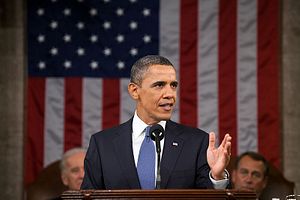In a recent televised segment for Voice of America’s On The Line here in Washington, DC, I described U.S. Secretary Chuck Hagel’s recent visit to Asia as the great reassurance tour. The same can be said of President Obama’s trip to the region this week. The challenge for the President is quite simple: convince America’s allies that its “pivot” or “rebalance” to the Asia-Pacific is the real deal.
While I disagree with the president a great deal when it comes to many aspects of his domestic agenda, as well as certain aspects of his foreign policy, one thing is clear: the move to anoint Asia as the central focus of American foreign policy was a no-brainer and smart strategy. However, when one labels their foreign policy goals with the sticky term such as “pivot,” any move that can be considered counter to such a strategy invites skepticism and charges of abandonment. Will Russia’s moves against Ukraine spark a counter pivot back to Europe? Could Washington get sucked back into another war in the Middle East if Syria’s civil war were to spread? Maybe the pivot was just an all-too-clever marketing strategy, one of the best bumper sticker foreign policy slogans of all time, which set expectations way too high. While we may have to let history be the judge in the years ahead, clearly with the rise of China and trillions of trade dollars at stake, America has very pragmatic reasons to make Asia the center of its foreign policy — hype excluded.
While President Obama has a number of ways to push ahead with a carefully crafted Asia-Pacific focused foreign policy, time is not on his side and he must choose his agenda quite carefully. Here are two possible items that could help ensure a successful reassurance tour of Asia.
1. Get behind TPP: While it’s a substantial challenge to convince Washington’s partners in the region that America’s commitment to Asia is ironclad and will not be torpedoed by the foreign policy forest fire of the moment — whether it’s called Ukraine, Syria, or something else not Asia-Pacific focused — Obama does have multiple options for reassuring allies and strengthening the pivot. Although security considerations are undoubtedly important, the Trans-Pacific Partnership (TPP) offers Obama a defining foreign policy achievement in which the legacy of the pivot would have a rock solid foundation. While the road ahead looks long and fraught with possible challenges, nothing would better demonstrate America has truly pivoted to Asia than successfully negotiating and then ratifying such an agreement. To be sure, the TPP will not be a one-stop job creator for America’s struggling economy. Still, it does something that might even be more important — it ties many of the largest economies of the Asia-Pacific into a common economic framework. Nothing could be more important than crafting a shared sense of economic destiny and hence the TPP should be at the top of Obama’s reassurance tour agenda. He should discuss TPP, why it is important, and why America is heavily invested in its creation. It should be the first and last point of every speech he gives while in Asia.
2. Make clear Washington will defend the status-quo: As many have correctly pointed out, China has been on a tear in recent years with its nine-dashed line in the South China Sea, capture of Scarborough Shoal, actions around Second Thomas Shoal, and challenge to Japan in the East China Sea. In these and other areas, Beijing has clearly confronted the existing order in Asia. President Obama needs to make a clear, decisive statement that Washington has a vested interest in maintaining Asia’s existing order and that America will defend the status quo. A declaratory statement while in Japan or in the Philippines, not mentioning any nation in particular, but stating that America will not allow any power to slowly undo the status quo could only enhance the geostrategic aspects of the pivot. He should explain that any attempt to undo the present order in Asia would be met by with the strongest resistance by Washington. Such a signal to Beijing — and by default to Moscow as well — that Washington considers the maintenance of the present international order with respect to national boundaries, exclusive economic zones and global commons to be vitally important could prove quite powerful. President Obama has an opportunity to show U.S. leadership and defend what should be obvious — he should seize it.
In the end, the trip could be just another on a long list of tours all American presidents make to vital regions around the world — nothing more than a historical footnote filled with champagne toasts and great photo ops. However, Asian leaders are clearly watching what President Obama does on this trip as a benchmark of where the pivot ranks on America’s list of foreign policy challenges. He would be well served to make sure his tour of Asia matches words with deeds by seeking to reassure allies that Asia is the most vital region in Washington’s foreign policy calculus. Anything less could mean that his administration crafted an ingenious foreign policy slogan for nothing.

































